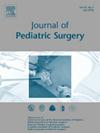Routine Urology Consultation and Follow-up After Pediatric Blunt Renal Trauma is Likely Unnecessary
IF 2.4
2区 医学
Q1 PEDIATRICS
引用次数: 0
Abstract
Introduction
This study examines the outcomes of high-grade renal trauma in pediatric patients and evaluates the intervention rate. In our hospital, we routinely consult urology on all high-grade injuries. We anticipated minimal intervention, casting doubt on the need for routine urology consultation and follow-up.
Methods
We conducted a retrospective review at a single pediatric trauma center from January 2018 to June 2023, focusing on patients with severe (grade III-V) renal injuries. Data collected included demographics, trauma-related variables, hospital course, interventions, and follow-up. When the grade was not readily available in the electronic medical record, we had a board-certified pediatric radiologist review the imaging and provide the grade. Follow-up was included only if it was with a pediatric urologist.
Results
There were 92 patients that met our inclusion criteria. Of these, 47 were grade III, 32 were grade IV, and 13 were grade V. Six (6.5%) patients required inpatient renal stent procedures. Follow-up occurred in 55/92 (60%) patients with a pediatric urologist. Follow-up by grade is as follows: 22/47 (47%) grade III, 22/32 (69%) grade IV, and 11/13 (85%) grade V. Overall 5.8% of patients required antihypertensive medications and this was more likely as injury grade increased. All stents were removed outpatient and there were 3 (3.3%) additional outpatient interventions, all in patients that were symptomatic.
Conclusion
Given the low prevalence of interventions after discharge, routine consultation and follow-up with urology is likely unnecessary in the absence of an inpatient urologic procedure during the index hospitalization. Patients with high-grade injuries should instead follow up with a trauma clinic or general provider with urology follow-up based on symptoms.
Type of Study
Retrospective Review.
Level of Evidence
Level III.
小儿钝性肾创伤后常规泌尿科会诊和随访很可能是不必要的。
简介本研究探讨了儿科高位肾创伤的治疗效果,并评估了干预率。在我院,我们对所有高位肾损伤进行泌尿科常规会诊。我们预计干预率极低,因此对常规泌尿科会诊和随访的必要性产生了怀疑:我们于 2018 年 1 月至 2023 年 6 月在一家儿科创伤中心进行了一项回顾性研究,重点关注严重(III-V 级)肾损伤患者。收集的数据包括人口统计学、创伤相关变量、住院过程、干预措施和随访。如果电子病历中没有现成的分级,我们会请一位获得医学会认证的儿科放射科医生对影像学进行审查并提供分级。只有在儿科泌尿科医生的指导下进行的随访才包括在内:共有 92 名患者符合我们的纳入标准。其中,47 例为 III 级,32 例为 IV 级,13 例为 V 级。6 例(6.5%)患者需要进行住院肾支架手术。55/92(60%)名患者接受了儿科泌尿科医生的随访。各等级随访情况如下总体而言,5.8% 的患者需要服用降压药,而且随着损伤等级的增加,这种可能性更大。所有支架均在门诊拆除,另有3例(3.3%)门诊介入治疗,均为无症状患者:鉴于出院后介入治疗的发生率较低,如果在住院期间没有进行泌尿科住院手术,则可能没有必要到泌尿科进行常规咨询和随访。高位损伤患者应到创伤诊所或普通医疗机构就诊,并根据症状到泌尿科进行随访:回顾性研究:证据等级:三级。
本文章由计算机程序翻译,如有差异,请以英文原文为准。
求助全文
约1分钟内获得全文
求助全文
来源期刊
CiteScore
1.10
自引率
12.50%
发文量
569
审稿时长
38 days
期刊介绍:
The journal presents original contributions as well as a complete international abstracts section and other special departments to provide the most current source of information and references in pediatric surgery. The journal is based on the need to improve the surgical care of infants and children, not only through advances in physiology, pathology and surgical techniques, but also by attention to the unique emotional and physical needs of the young patient.

 求助内容:
求助内容: 应助结果提醒方式:
应助结果提醒方式:


